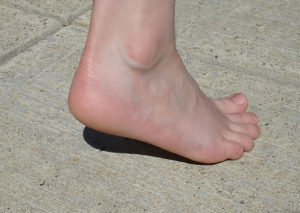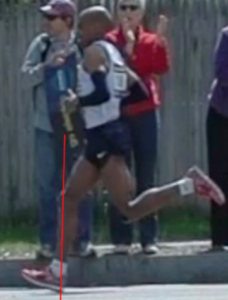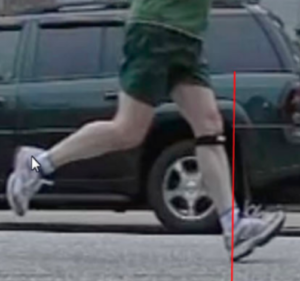How does your heel strike?
As bipedal creatures, we are plantigrade animals.
This means our entire foot is down on the ground when we stand. Four-legged animals always have their heel up in the air behind the forefoot.
This is a major change in design and function.
When we walk as bipedal creatures there is a specific pattern to our heel strike.
Ideally, the foot strikes gently down on the outside of the heel. There is even a little blob of bone on the heel where this should happen.
From there the bones of the foot flow forward ending up on the inner foot and the big toe.
At this point, all of the weight of the body is centered over the mound of the big toe for push off to the next step.
Well, that’s the design… and here’s the reality.

In most of my students and clients, I see that the heel strikes down too hard. And then the bones take an uninspired journey to the outside of the foot.
And they usually never get near that all-important big toe.
The next time you are out pay attention to the way you walk. And use the heel strike as an important way to feel the way you walk.
Listen for the sound it makes when you move forward. Is it light and soft or a hard ka-thunk?
The aim is to be light on our feet putting as little pressure on our joints as possible.
We would like to lead with the core of the body when walking instead of leading with the feet.


As the heel strikes the body should already be over the foot moving forward to the next step.
Instead, most walking allows the foot to lead the way.
As a result, the heel strikes down too far forward of the knee. And then you will be on your heel waiting for the rest of the body to catch up.
This way of walking spends too much time on the heel.
We want to walk spending as little time on the heel as possible.
The heel strike should be soft and fluid and the body should fall lightly forward through the next step.

![FootDorsiflexed[1] heel strike](https://www.corewalking.com/wp-content/uploads/2020/05/Lower-Trapezius-300x157.jpg)